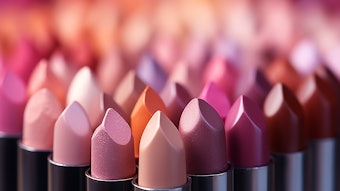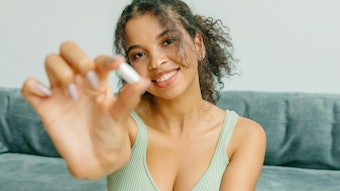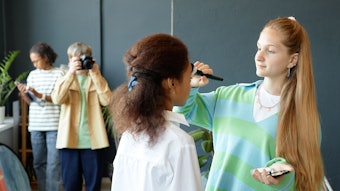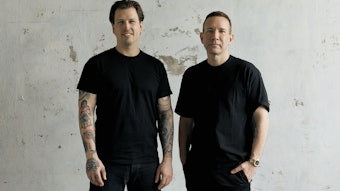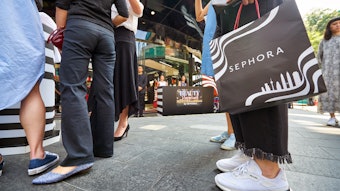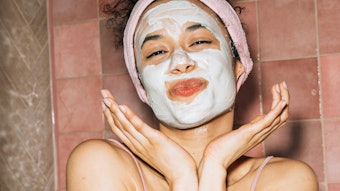- In 2013, global sales increased 5% at fixed U.S. dollar prices, down from 6% in 2012.
- Multitasking brands remain at the forefront of product innovation.
- Brand owners are expanding their portfolios with age-specific products, and the upper end of the age pyramid is presenting some of the most attractive opportunities for product development.
- The deodorant sprays category was the standout performer in 2013, largely driven by younger male consumers in emerging markets.
- Skin care put up its weakest performance in four years, with growth slipping below 5% in 2013.
The year 2013 will go down as a disappointing one for the beauty industry. Nothing dreadful happened, but global brands largely failed to capitalize on resurgent economic confidence in developed markets while formerly booming emerging markets became less dependable as growth engines. The end result saw global sales increase 5% at fixed U.S. dollar prices, down from 6% in 2012.
Demand for products with multi-tasking solutions spread right across the industry, triggering fiercer cross-category competition as brands battled to recruit new consumers and hang on to existing ones. The innovation stakes in terms of product development, marketing and distribution ratcheted up, reflecting a consumer base that has become brand savvy and hungry for novelty yet increasingly price sensitive.
All-singing, All-dancing Beauty
Multitasking brands remain at the forefront of product innovation. This is squeezing growth in the overall value of the market because consumers now expect a single product to serve multiple functions, whereas in the past they might have bought two or three products to do the same things. In developed markets, it is telling that the total value of beauty and personal care climbed only 1% in 2013, compared with 2% in the two preceding years.
BB/CC creams kicked off the multi-tasking trend, but it has cross-fertilized across almost all industry categories, especially in Western Europe and North America. Anti-aging and moisturizing are the must-have functions, visible in categories as wide ranging as foundations, nail polish, hair care and lipstick. This has raised the bar for industry innovators.
Even women’s apparel is getting in on the act. Wrangler launched Denim Spa jeans, with moisturizing ingredients (natural oils and butters) to protect legs from denim and, according to the brand, to prevent cellulite. The effect lasts two weeks, but a reload spray allows up to 95 wears. Triumph’s underwear range, Light Sensation, also promises skin nourishment with its microcapsules of aloe vera, usable for up to 100 washes. Skin care apparel is a window into a future new battleground, perhaps.
The Ages of Woman
Brand owners also are beefing up their portfolios with age-specific products. Brands targeted at teens and tweens have become big business, but the upper end of the age pyramid presents some of the most attractive opportunities for product development. According to Euromonitor International, the global population of women aged 50 and older will grow from 870 million to 1.3 billion over the next decade and a half. Tapping into this “gray dollar” will become increasingly critical as the beauty industry chases down growth.
Category Ups and Downs
The deodorant sprays category was the standout performer in 2013, growing 11% at fixed U.S. dollar prices. The key is that young men, especially in developed markets, are buying deodorants rather than pricier aftershaves or fragrances. This has been a prevailing trend for the last five years. However, operating conditions could get tougher as the number of people aged 13 to 45 shrinks. To retain the high growth rates of recent years, brands will need to be more effective at recruiting older consumers. Meanwhile, skin care put up its weakest performance in four years, with growth slipping below 5% in 2013. It is further evidence that multitasking products are diluting the category’s total value. Skin care performance was notably sluggish in key markets, including Japan, the U.S. and Western Europe. It also lost momentum in Brazil as an increasingly cash-conscious middle class reined in spending.
The Facebook Generation
If multifunctionality is the big theme in product development, the Internet remains the big story in distribution and marketing. Internet sales of beauty and personal care totalled $22 billion in 2013, double the amount of five years ago. Predictably, online platforms are, by a significant margin, the fastest-growing distribution channel for the industry, with sales growing at an average rate of 18% a year since 2009. The Internet is much more powerful than its sales footprint alone, of course. There has been little short of a revolution in social media usage in recent years. Getting the right strategy for Facebook, Twitter, YouTube, Instagram, Tumblr, Weibo and a host of other platforms is now critical for any beauty brand.
The power of social media—and, in particular, its speed of impact—is illustrated by the remarkable rise and fall of a previously unknown female soccer fan at the recent World Cup in Brazil. Wearing face paint and a Belgium red devil’s horn hat, a random photo of the 17-year-old went viral, ending with L’Oréal snapping her up as the new face of its Professionnel series. Poignantly, the company dropped her two weeks later after another image went viral, this time showing the same girl hunting game in Africa. Instant gratification, instant retreat; it is all up for grabs in a fast-moving market that is swept along even quicker by social media.
Never a Dull Moment
Part of the attraction of social media is brands can be riskier in their advertising campaigns than ever before. Firstly, the Internet is a comparatively low cost platform; secondly, campaigns can be pulled quickly if regulators intervene or, as in the case of the teenage soccer fan, things go awry.
The challenges presented by social media are indicative of a fast, fickle and convenience-fueled consumer culture. Those same traits are driving up demand for multi-solution beauty products, as well as the demand affordable price points. It would not be overstating things to say the industry is in the midst of sweeping strategic change, with the consumer—more than ever—dictating the terms. Against this backdrop, there also is a shifting demographic landscape in which the “gray dollar” is growing in importance.
The key implication for the beauty industry is that brand strategies need to be fine-tuned and almost bespoke in their execution. These are challenging times, with growth difficult to etch out. However, there has probably never been a more exhilarating period to be involved in both the corporate and creative sides of the beauty industry. Problematic it might be, boring it is not.
Rob Walker, senior fast-moving consumer goods analyst, Euromonitor International, can be contacted at [email protected].

